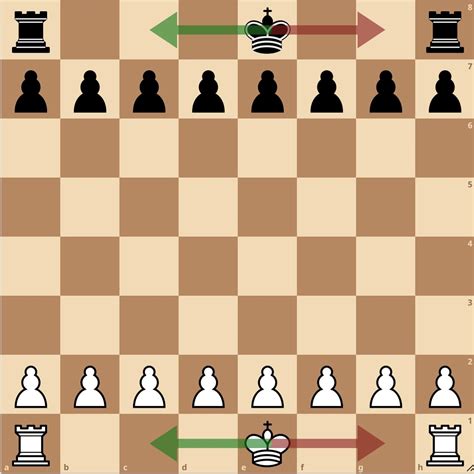How to Castle in Chess: A Beginner's Guide to this Powerful Move
Castling is a unique and powerful move in chess that allows you to quickly develop your king and get your rook into play. It's a crucial tactic often overlooked by beginners, but mastering it can significantly improve your game. This guide will break down exactly how to castle, the rules governing it, and why it's such a valuable move.
What is Castling?
Castling is a special move involving your king and one of your rooks. It's the only move in chess where you move two pieces simultaneously. Specifically, you move your king two squares towards a rook, and then place that rook on the other side of the king.
The Rules of Castling
Several conditions must be met before you can castle:
- Neither the king nor the rook involved can have previously moved. This is crucial – once either piece has moved, castling with that rook is no longer possible.
- There must be no pieces between the king and the rook. Any pieces obstructing the path prevent castling.
- The king cannot be in check, nor can it pass through or end up in check. This means you can't castle if your king is currently under attack or would be attacked during or after the castling move.
- The squares the king passes through and the destination square must not be under attack by any opponent’s pieces. Your king can't move into or through a square controlled by your opponent.
How to Castle: Kingside vs. Queenside
There are two ways to castle:
Kingside Castling
This involves moving your king two squares to the right (towards the kingside rook) and placing the kingside rook next to it. This is often the more common type of castling.
Queenside Castling
This involves moving your king two squares to the left (towards the queenside rook) and placing the queenside rook next to it. Queenside castling is slightly more complex because the king moves past the queenside rook.
Why is Castling Important?
Castling provides several significant advantages:
- King Safety: Moving your king to a safer position away from the center of the board is a primary benefit.
- Rook Development: Bringing a powerful rook into the game quickly enhances your attacking potential.
- Improved Piece Coordination: Castling improves the coordination between your king and rook, often leading to synergistic attacks.
Common Mistakes to Avoid
- Forgetting the rules: Make sure to review the rules before attempting to castle. A failed castling attempt can easily lose you the game.
- Castling into check: This is a fatal mistake. Always ensure your king is not in check, nor will it pass through or end up in a square attacked by your opponent's pieces.
- Not noticing obstructions: Double-check that there are no pieces between your king and the chosen rook.
Mastering Castling: Practice and Patience
Like any chess strategy, mastering castling takes practice. Play through games, experiment with different openings, and pay attention to when and how your opponents castle. Understanding your opponent's castling plans is as important as implementing your own.
By understanding and practicing these principles, you'll significantly enhance your chess game and improve your overall strategic thinking. Happy castling!
